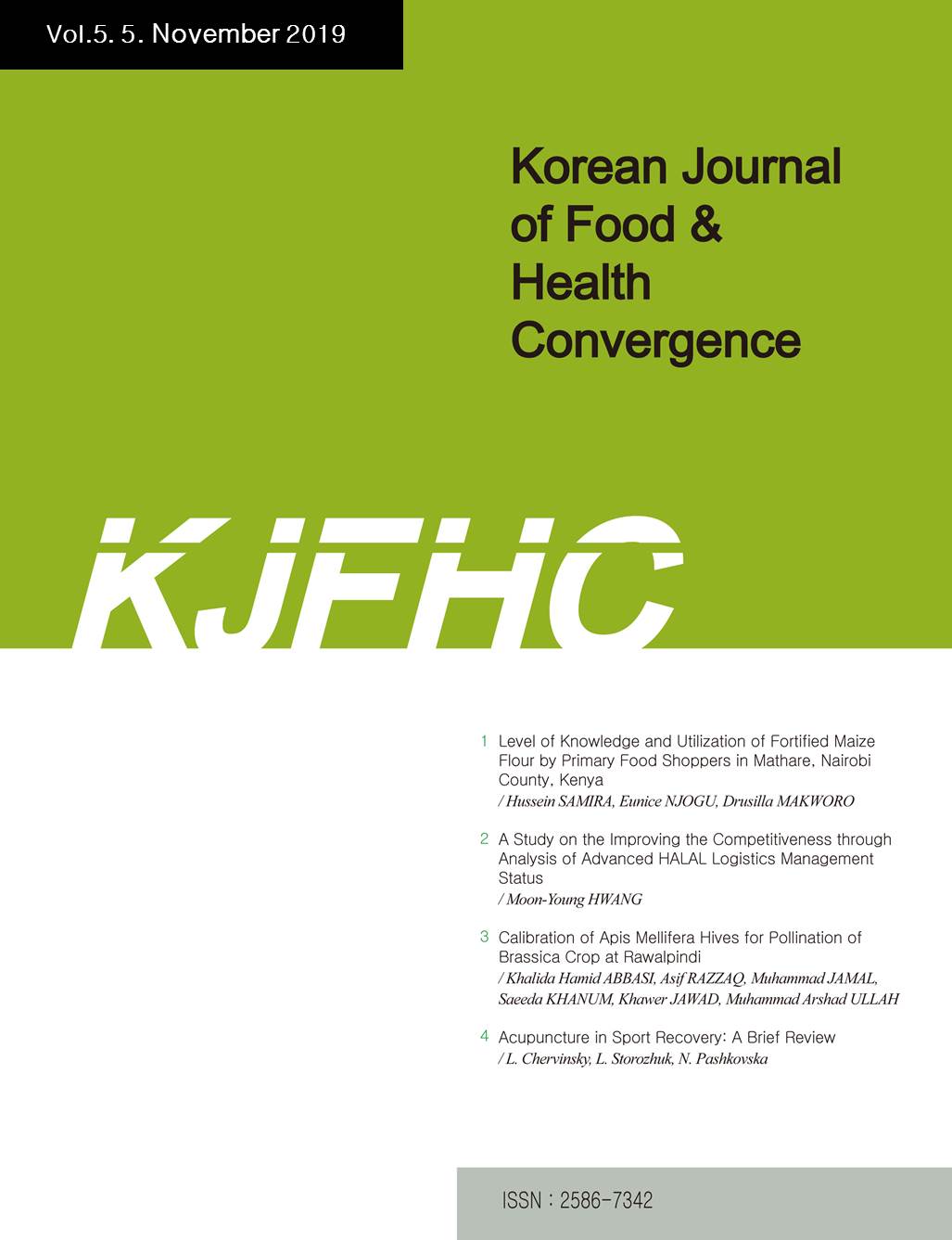 E-ISSN : 2586-7342
E-ISSN : 2586-7342
LEE, Jiwon
CHUNG, Donghui
YOUN, Yerim
JEON, Kyoung Mi
Abstract
The purpose of this study was to compare the nutrient intake of elderly according to their cohabitation status and determine its effects on the prevalence of anemia. Data from the KNHANES were used for this study, including raw data on socioeconomic characteristics, nutrient intake, health status, and clinical laboratory findings. Study subjects aged 60 to 80 years were retrieved and analyzed. As a result, the prevalence of anemia was 12.0% (men, 11.6%; women, 12.3%). The prevalence rate increased with age, and odds ratio [OR] of anemia among those aged 75 to 80 years was 4.16 times higher in men (OR=4.16, 95% confidence interval [CI]=2.48-6.97) and 2.77 times higher in women (OR=2.77, 95% CI=1.86-4.14) compared to 60~64 years old. Socioeconomic factors (area of residence, education level, household income), including cohabitation Status (living alone VS living with other family members), and health behaviors (high-risk drinking, smoking, aerobic exercise) did not significantly effect on anemia. In addition, other than protein intake for men, nutrient intake did not have a significant effect on the prevalence rate of anemia. Hypertension, diabetes, and cancer significantly increased the risk of anemia. In Korea, the influencing factors of elderly anemia change over time, so periodic follow-up studies are needed.
- keywords
- Anemia, Aged, Family, KNHANES
- Downloaded
- Viewed
- 0KCI Citations
- 0WOS Citations
